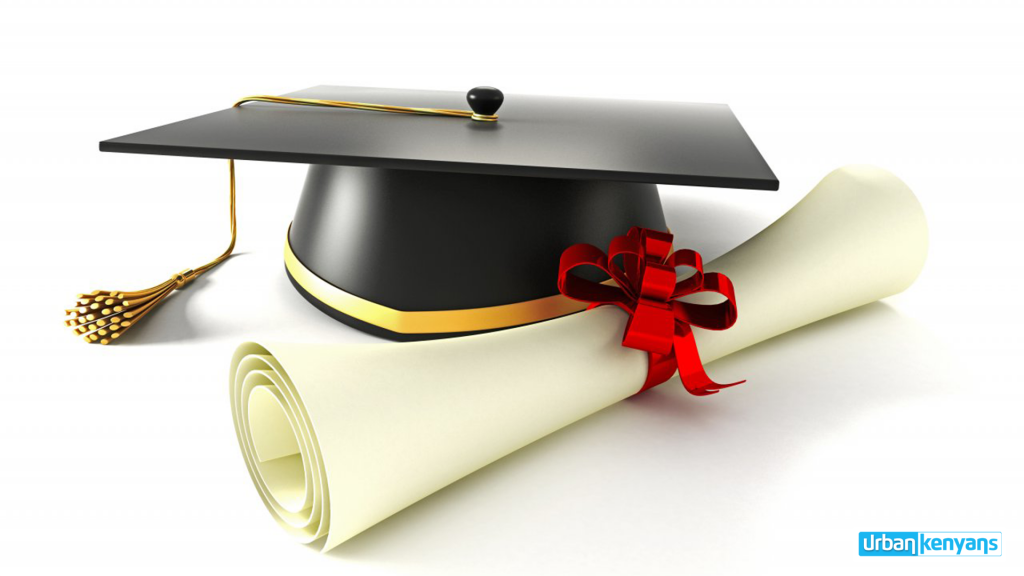Kenya’s government set up a free primary education for all programs in 2003. In 2008, they did the same thing for secondary education. Because of this, there were almost three million more students in primary school in 2012 than in 2003, and 7,000 more schools. Between 2003 and 2012, the number of people who went to secondary school grew from 43 percent to 67 percent as people who had gone to primary school for free moved up through the system.
The effects of the Education for All program of 2003 have been seen at the university level, where enrollment numbers have skyrocketed, more than doubling between 2012 and 2014, as the first group of children who went to primary school for free started going to college.
The government still has a long way to go when it comes to improving the quality and availability of the education system in Kenya. In 2010, one million children were still not in school. This was almost half the number of children who weren’t in school in 1999, but it was still the ninth-highest number of any country in the world.
There are still problems with the quality of education, especially at the primary level, where the number of students who can’t read or write is growing. More than a quarter of young people haven’t finished lower secondary school, and one in ten didn’t even finish primary school.
The number of university students grew by a huge 28% between 2013 and 2014, and that growth is expected to continue this year. However, the 2015 national budget cut funding by 6%.
Because funding isn’t keeping up with enrollment growth, students will have to pay more for their tuition. This will make it harder for marginalized people to get into college, and it will add to quality problems caused by overcrowding, overused infrastructure, and a lack of teachers.
Kenyan Students Abroad And International Students
In 2012, there were 13,573 Kenyan students studying abroad, with 3,776 in the US, 2,235 in the UK, and 1,191 in Australia, according to data from UNESCO. In the last ten years, these numbers have gone down by a lot.
In 2003, when there were the most Kenyans in the US, there were 7,800. Last year, there were only 3,500. The drop has been especially sharp at the undergraduate level. This is thought to be because visa rules have become stricter since 9/11 and because a Western education is very expensive compared to cheaper options in East African countries nearby.
The number of Kenyans coming to the U.S. to get a graduate degree has dropped much less than the number of Kenyans coming to the U.S. for an undergraduate degree. This is because Kenyan universities don’t offer many opportunities for research degrees, and access to undergraduate education in Kenya is getting better.
Even though it’s not in the UNESCO data, Kenyan media reports suggest that the vast majority of Kenyan students who go to school abroad are in countries close by. It is thought that there are more than 20,000 Kenyan students in universities in Uganda and about 5,000 in Tanzania.
Education System In Kenya
Kenya’s national education system is based on a model called “8-4-4,” which stands for eight years of basic education, four years of secondary education, and four years of college. In 1985, this model took the place of the 7-4-2-3 system.
Formal school starts when a child is six years old, and basic education is free and required until the child is 14 years old. From the basic cycle, students move on to the academic secondary cycle, technical schools, or trade schools. The second level of school is also free, but it is not required.
Basic Education In Kenya
In 2003, all students were given free access to primary school. This policy increased the number of students who went to school by almost 40% in four years, from 5.9 million in 2003 to 8.2 million in 2007.
Lower primary (Standards 1-3), middle primary (Standards 4 and 5), and upper primary are all parts of the cycle (Standards 6–8). At the end of primary school, students take the national Kenya Certificate of Primary Education (KCPE) exam, which is overseen by the Kenya National Examination Council (KNEC), which is part of the Ministry of Education.
The test is mostly used to rank students and put them into the right secondary and technical schools. If a student does well in school, they can go to a national secondary school, but if they do average, they have to go to a provincial school.
The curriculum is the same everywhere in the country. It includes English, Kiswahili, a local language, math, science, social studies, religious education, creative arts, physical education, and life skills. There are tests in Kiswahili, English, math, science, agriculture, and social studies.
High School Education In Kenya
The second cycle lasts four years and is made up of two stages that each last two years. Students take exams given by the KNEC at the end of the fourth year. These exams lead to the Kenya Certificate of Secondary Education (KCSE). The test is also used to decide who gets into universities and who gets training at other technical and vocational schools of higher education.
KCPE holders who don’t want to go to high school can go to youth polytechnics, which prepare students for levels 1–3 of the Government Trade Tests. Less than half of students in elementary school go on to high school.
College Or University In Kenya
In Kenya, higher education has grown a lot in recent years. In 2005, there were only five public universities in the country. Now there are 22, and there are plans for up to 20 more.
Most of the growth in the university sector has come from upgrading colleges that were already there. There are also 17 private universities and 14 colleges that are part of both public and private universities. 14 more organizations have temporary letters of permission to run. All of these things can lead to academic degrees.The country is also trying to build more university libraries according to ELM4, the research website from the University of Minnesota.
As the number of universities has grown, so has the number of people who attend them. The most recent enrollment numbers for 2014 show that there were 443,783 students in universities in Kenya. This is more than double the number of students in universities in 2012. Approximately 215,000 of those students attended private schools.
In the non-university sector, students go to public and private technical and vocational polytechnics, colleges (like teacher and medical colleges), and other tertiary-level TVET institutions (technical training institutes, institutes of technology, and technical and professional colleges). Most of the time, the programs at these schools last between two and three years and lead to certificates, diplomas, and higher national diplomas.
Current government plans call for at least 20 new public universities, many of which would be in areas that aren’t well served. However, recent budget cuts have put these plans in doubt. Still, there aren’t enough lecturers, which keeps quality standards from getting better and causes the ratio of students to teachers to keep going up.
Open To Public Universities
After the Universities Act No. 42 of 2012 was passed, these institutions’ separate acts were taken away. This meant that they were given charters on March 1, 2013:
- University of Nairobi (UoN)
- Moi University (MU)
- Kenyatta University (KU)
- Egerton University (EU)
- Masinde Muliro University of Science and Technology (MMUST)
- Maseno University (MSU)
Campuses Of Public Universities
- The campuses of Kenya
- Science University (U of N)
- Kitui University (KU)
- Ruiru Campus (KU)
People Also Ask
Does Kenya Have A Good Education System?
Kenya’s education outcomes are very different depending on where you live. Most counties have more than 12 expected years of school, but a few counties in the north and northeast of the country have as few as 6.5 expected years of school. These counties are in arid and semi-arid areas.
What Are The Current System Of Education?
Nigeria’s current education system consists of nine years of elementary school, three years of high school, and four years of college.
Why Do We Have Different Education Systems In Kenya?
The old education system had failed Kenyans, and it needed to be changed or thrown out completely if we wanted our country to do well, grow economically, and get rid of these social problems.
Conclusion
The government will set up and use a competency-based assessment for early education to improve how well children learn. In order to improve the education system in Kenya and make it more fair, the government will use this competency-based assessment for students with special needs and disabilities.
For efficiency, the government will increase the number of public schools that follow certain key parts of the new school capitation grant guidelines and operational manual.
The US$3 million results-based part of the grant is tied to getting results in early education, giving students with special needs and disabilities more opportunities to learn, and making sure schools follow new administrative rules to improve efficiency.







